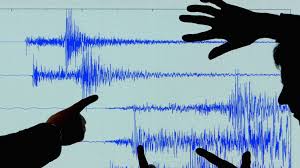Introduction
Earthquakes are among the most devastating natural disasters, capable of destroying cities and claiming thousands of lives within seconds. Their suddenness leaves little room for preparation, which has driven scientists and the public alike to ask: Can we predict earthquakes? The answer, while complex, lies at the intersection of geophysics, technology, and human curiosity. In this article, we explore the science behind earthquake prediction, debunk persistent myths, and look toward the future of seismic forecasting.

Understanding Earthquakes: The Basics
Earthquakes occur due to the movement of the Earth’s tectonic plates. These plates are constantly shifting, and when they grind against each other at fault lines, stress accumulates. Eventually, this stress is released as seismic energy, resulting in an earthquake. The most active zones include the Pacific Ring of Fire, the Himalayas, and the San Andreas Fault in California.
Seismologists use instruments called seismographs to measure the intensity, location, and duration of earthquakes. These tools have improved dramatically over the last century, allowing scientists to study past seismic activity and detect real-time movements in the Earth’s crust. However, while these instruments can alert us to earthquakes as they occur, predicting one before it happens remains a major challenge.
The Science Behind Earthquake Prediction
Earthquake prediction involves specifying the time, location, and magnitude of a future quake. Currently, no scientific method can do all three reliably. What seismologists can do is forecast probabilities. For example, they might say there is a 70% chance of a magnitude 6.7 or greater earthquake hitting Southern California in the next 30 years.
Scientists analyze patterns in seismic activity, monitor small precursor tremors, and study the build-up of tectonic stress. Some models examine historical earthquake cycles to estimate when a fault might rupture again. Other approaches use GPS and satellite data to measure the slow movement of the Earth’s crust. Despite these efforts, a definitive prediction remains elusive because of the complex and chaotic nature of fault systems.
Earthquake Early Warning Systems
Although true prediction is not yet possible, early warning systems offer a crucial line of defense. These systems don’t predict earthquakes but detect the initial energy release (called P-waves) and send alerts before the more damaging waves (S-waves and surface waves) arrive.
Countries like Japan and Mexico have implemented advanced early warning systems. These alerts, sometimes only seconds before shaking begins, can still be life-saving. Trains can be stopped, surgeries paused, and people given a few precious moments to take cover. The United States has developed ShakeAlert, which is gradually being rolled out across the West Coast.
Common Myths About Earthquake Prediction
Misconceptions about earthquake prediction abound, often spread by social media and pseudoscientific sources. Here are a few common myths:
1. Animals can predict earthquakes. While there are anecdotal reports of animals behaving strangely before quakes, scientific studies have not consistently proven this behavior is predictive. Changes in animal behavior might coincide with seismic activity, but they are not reliable indicators.

2. Small earthquakes prevent big ones. This myth suggests that frequent small quakes “release pressure” and reduce the risk of a major event. In reality, small quakes usually occur on different sections of a fault and do not prevent large earthquakes. Sometimes, small quakes can even trigger bigger ones.
3. Earthquakes only happen in certain seasons or weather conditions. There is no correlation between weather and earthquakes. Earthquakes are driven by geologic forces deep within the Earth, not surface conditions.
4. Scientists are hiding earthquake predictions to avoid panic. This conspiracy theory is false. Scientists openly share earthquake research and emphasize preparedness. The scientific community is transparent about what can and cannot be predicted.
Case Studies: Prediction Attempts and Lessons Learned
Several high-profile cases highlight the difficulty of earthquake prediction:
Haicheng, China (1975): Authorities successfully evacuated the city before a major quake, credited to foreshocks and unusual animal behavior. However, similar methods failed the following year in Tangshan, where no warning was issued and over 240,000 people died.
L’Aquila, Italy (2009): A controversial case where scientists were prosecuted for failing to predict an earthquake. The scientific community criticized the ruling, emphasizing that reliable prediction was not possible and the scientists had communicated the risks clearly.
These examples underscore the unpredictability of seismic events and the importance of focusing on preparedness and resilience rather than precise prediction.
The Future of Earthquake Forecasting
While exact predictions remain out of reach, advancements in technology are improving our ability to assess earthquake risk:
1. Artificial Intelligence and Machine Learning: AI can analyze vast amounts of seismic data to detect patterns that might precede earthquakes. These tools may help refine probabilistic forecasting and improve early warning algorithms.
2. Satellite Monitoring and GPS Networks: New satellite technologies can track ground deformation with remarkable precision. This data helps scientists understand strain accumulation along fault lines.
3. Crowdsourced Data: Apps like MyShake collect real-time data from users’ smartphones, turning everyday devices into a seismic network. This not only aids in early detection but also increases public engagement and awareness.
4. Interdisciplinary Research: Combining geology, physics, computer science, and engineering may lead to breakthroughs in how we understand and model seismic behavior.
Preparedness Over Prediction
Given that we cannot reliably predict earthquakes, emphasis must be placed on preparedness. Earthquake-resistant infrastructure, public education, and emergency planning save lives. Schools and offices can conduct regular drills, individuals can secure heavy furniture, and communities can develop response plans.
Insurance and retrofitting older buildings are also vital, especially in quake-prone areas. Public alert systems, like ShakeAlert, should be expanded and supported. Empowering people with knowledge and tools to respond effectively remains our best defense.

Conclusion
The truth about earthquake prediction is nuanced. While we cannot yet predict the exact time and place of an earthquake, scientific advances have greatly enhanced our ability to understand seismic risk and respond effectively. Myths and misinformation often obscure the real progress being made. By focusing on education, early warning systems, and preparedness, we can mitigate the impact of these powerful natural events.
The future of earthquake forecasting lies in innovation, collaboration, and resilience. With continued investment in science and technology, we may not be able to stop earthquakes, but we can ensure that fewer lives are lost when they strike.
Read more:https://nfds.xyz/wp-admin/post.php?post=34&action=edit



